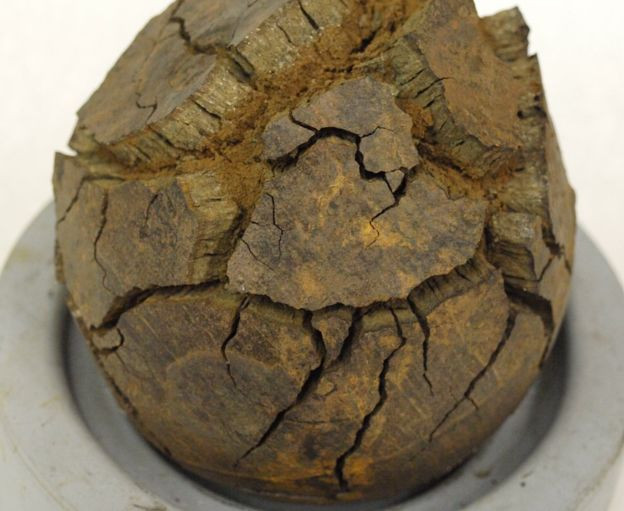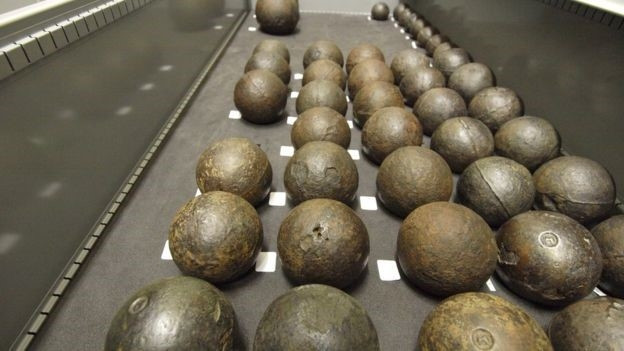Use X-rays to protect cannonballs on Mary Rose
Researchers are using strong X-rays to probe inside the cannonballs found on the famous ship Mary Rose in Tudor dynasty.
Researchers are trying to find ways to preserve these bullets, which will be corroded if exhibited.
There were 1,200 cannon bullets, found on King Henry VIII's flagship ship, recently stored in low moisture containers, away from public attention.
According to Dr. Eleanor Schofield, the purpose of this is to preserve them for future generations.'We store a lot of cannonballs. If we can understand the process better, we can implement new remedies and they can survive longer. '

The cannonballs are cracked and corroded if exposed to air - (Photo from The Mary Rose Trust).
The ship Mary Rose sank in 1545 and was salvaged from the sea in 1982. The cannonballs on the ship were difficult to preserve because they were absorbed by chlorine while lying on the seabed. This chemical has absorbed into the bullet core. This means that bullets will corrode if exposed to air.
Dr. Schofield's team tried to remove chlorine by immersing a few bullets into the solution. But the researchers found that although some were extracted, they could not be eliminated. They discovered this when the bullets began to decompose when displayed.

Bullets are stored in containers with low humidity - (Photo from The Mary Rose Trust).
Dr. Schofield then formed a research project to find out what was going on inside the cannonballs.
She checked with a powerful X-ray device , called the Diamond Light Source in Didcot, Oxfordshire. Dr. Schrofield will use it to observe how much i-inside is on the inside of the bullet, how much chlorine is left and where the decomposition has begun. But to test, cut up these precious objects. After consulting with the people in charge of Mary Rose, in 2016, they decided to cut six cannonballs, some of them. there were signs of damage, to preserve the rest.
In a new article, the results of using X-rays revealed a detailed chart of the factors involved in the decomposition process. This provides an unprecedented understanding of molecular-scale storage.
Hayley Simon from College College and Diamond Light Foundation found that the result is the first step towards developing new protection techniques.'Next we will deploy a long-term experiment, observing changes in corrosive products that are soaked in long-term preservation measures to monitor their impact.'
- Ways to protect the eyes in the hot sun
- The doctor showed how to protect the hot sun's eyes
- Peru strives to protect the rays that weigh up to two tons
- Simple way to protect your car on hot days
- The 38th statue of Mary,
- The grave may be the burial place of the Virgin Mary
- Why should I wear sunglasses
- Roses have a diameter ... 1cm
- Ultraviolet warning bracelet
- Medicinal taste from rosewood
- The window has an image 'The mother' is relocated
- Decoding the mysterious ray of Dr. Vu Van Bang
 Discovered an ancient centipede fossil 99 million years old
Discovered an ancient centipede fossil 99 million years old Discovered bat-like dinosaurs in China
Discovered bat-like dinosaurs in China Discovered a 200-year-old bronze cannon of the coast
Discovered a 200-year-old bronze cannon of the coast Discover 305 million-year-old spider fossils
Discover 305 million-year-old spider fossils